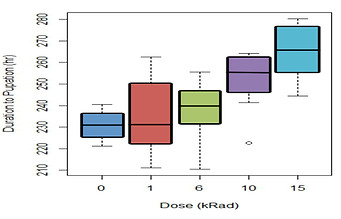
@ San Francisco State University
The Physiology of Pain & Tissue Damage
X-RAYS

IMAGINAL DISC DAMAGE
The Fuse lab focuses on understanding how animals respond to external stresses and tissue damage, from a physiological and developmental perspective. We use insect models to address questions that are fundamentally important for all organisms.
SYSTEMIC RESPONSE TO TISSUE DAMAGE
Growth requires increases in tissue mass but also coordination between tissues to ensure appropriate body allometry. Regulation depends on both genetic and environmental factors. In holometabolous insects (e.g. flies and moths), regulation of both growth and metamorphosis depends on complex interactions of hormones and other factors from the nervous and endocrine systems as well as from the imaginal discs (stem cell-like adult progenitor tissues). The regenerative imaginal discs can be selectively damaged using x-ray irradiation, because of their high proliferation rates in the last larval instar, and systemic effects can be monitored.
OUR RESEARCH

control

x-ray
Fig. 1 Imaginal disc anatomy in pupae is selectively damaged after whole body x-ray irradatiation (Omondi, 2011)

Fig. 2 Tunel labeling of imaginal discs is increased after x-ray damage (Silva, 2012)

Fig. 3 Development is delayed in response to imaginal disc damage at pupation (Lopez, 2015)
We are developing M. sexta as a model to study the systemic effects of tissue damage to the imaginal discs. This is a strong complementary model to D. melanogaster, and we have seen some parallel and some unique responses in M. sexta. As has been previously noted in Drosophila melanogaster, damage after whole-body x-ray appears to selectively damage the imaginal discs (Fig. 1, Fig. 2). Furthermore, we note delays in both larval (Fig. 3) and pupal development, and we are assessing the mechanisms for these delays.
STAINED HEMOCYTES
We have optimized a flow cytometry protocol to count stained hemocytes (Fig.4). We are assessing changes after imaginal disc damage in the total hemocyte population, and in select hemocyte groups (plasmatocytes and granulocytes) at different time points. We have found that by 24 hrs, total hemocyte populations have not changed in response to imaginal disc damage.

FIg. 4 Total hemocyte populations do not change in response to imaginal disc damage (Bhaskar, 2017)